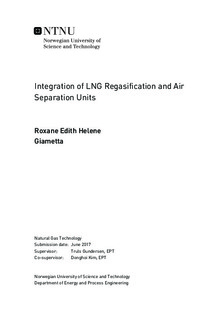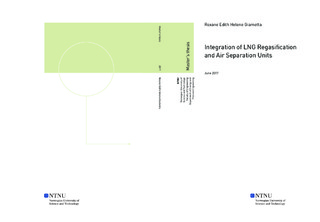| dc.description.abstract | Through the various LNG cold recovery applications, cryogenic air separation is the only one recovering the coldest range of exergy, which is also the most valuable. Several designs of integrated ASU and LNG regasification have been proposed but there is still a lack of fair comparison between the existing options. In this study, promizing configurations have been selected and classified according to the number of columns in the ASU block and the use of LNG cold exergy either for feed air cooling or in the nitrogen liquefaction loop. Each case has been modelized in the commercialized software Aspen HYSYS and evaluated thanks to a range of performance indicators: LNG cold exergy use, work requirement per amont of liquid nitrogen produced, Exergy Transfer Effectiveness and the decomposition of material stream exergy variations both at stream level and at component level. The two first indicators where insufficient to compair fairly the cases and required to scale the designs to a common set of constraints. ETE provided a tool to fairly compare the designs, with regards to all the ASU products, without re-scaling the original models. Yet, the high energy requirements for ASU processes overweighted material stream exergy variations in ETE results, making it close to a ratio of expansion to compression work. Further decomposition of material exergy variations confirmed that exergy analysis at component level was more consistant than stream level calculation for processes with a chemical change. Single column designs were more efficient than two-column ASU configurations, the best performing cases among integrated designs being the recuperative vapor recompression ASU using heat pump effect proposed by Fu and Gundersen (2013) followed by the integration of column draws coupled to compression-expansion described by Mehrpooya et al (2015). | |

